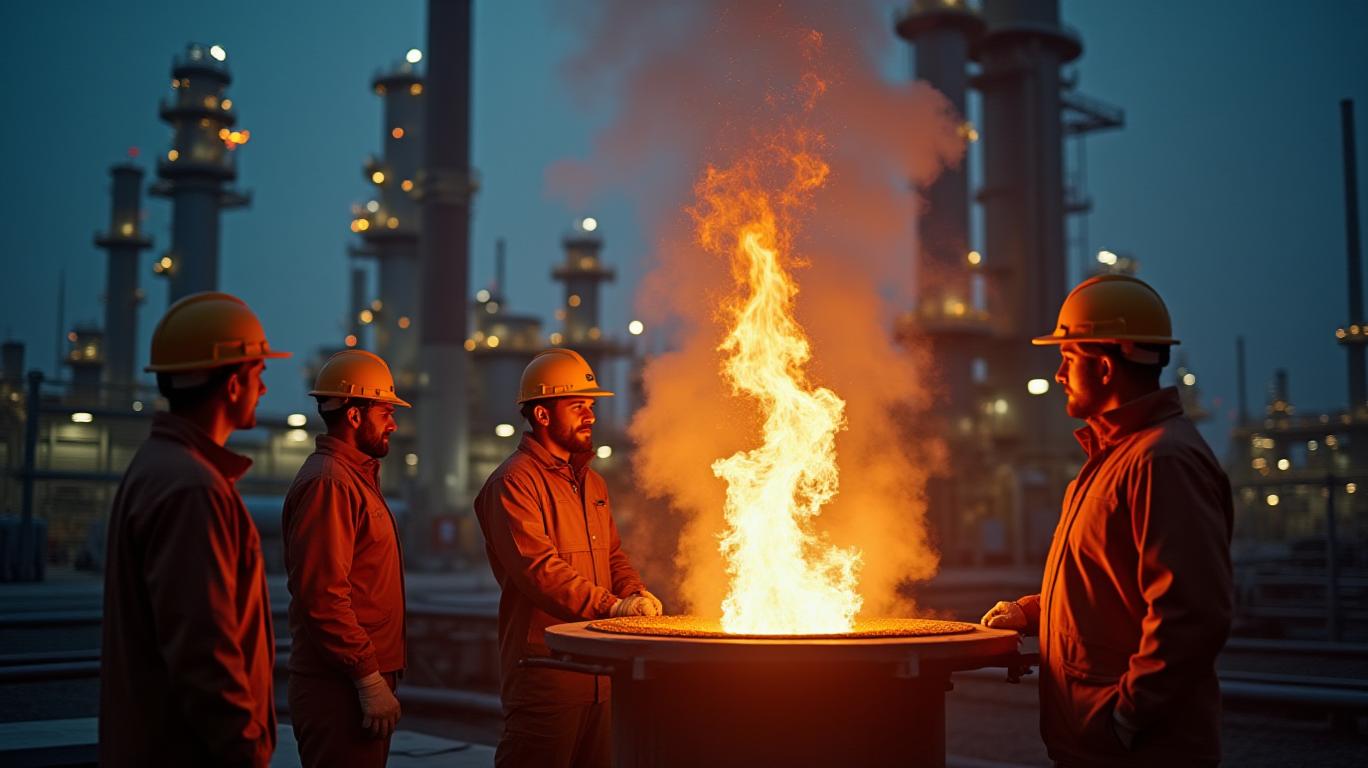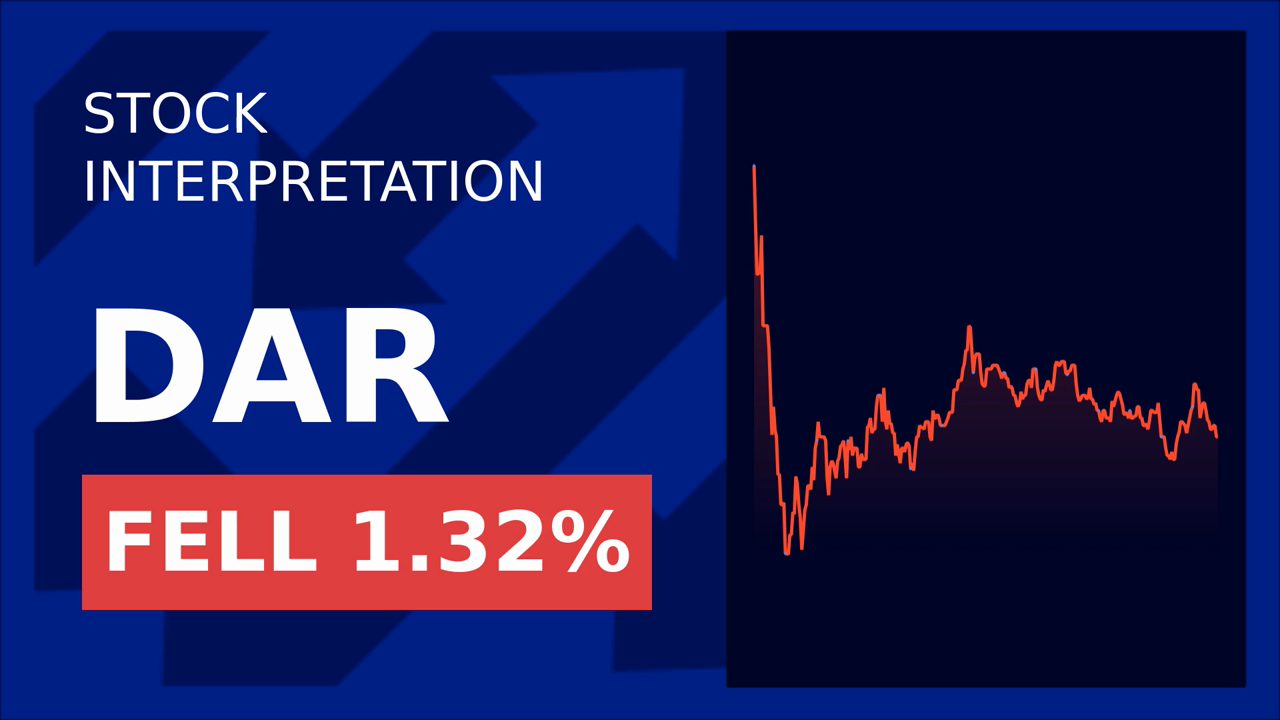Darling Ingredients’ Biofuel Struggles Cloud Q1, But Core Resilience Sparks Hope
Darling Ingredients (DAR) delivered a stark reminder this week of the volatility inherent in renewable energy markets. The company reported a first-quarter net loss of $26.2 million, or $(0.16) per share, a staggering miss against the FactSet consensus estimate of $0.24 EPS. The decline was driven by margin pressures at its critical biofuel subsidiary, Diamond Green Diesel (DGD), which posted a $30.5 million net loss. Yet beneath the headline numbers, the story is more nuanced: a resilient core business, disciplined capital allocation, and a cautiously optimistic outlook hint at opportunities for patient investors.
The earnings miss was no surprise to those tracking the biofuel sector. DGD’s struggles are emblematic of an industry grappling with pricing volatility and supply chain disruptions. The joint venture, which produces renewable diesel and other fuels, sold 219.1 million gallons in Q1 but managed an average EBITDA of just $0.06 per gallon—a fraction of its historical margins. “DGD’s challenges are a symptom of broader industry headwinds,” said CEO Randall Stuewe on the earnings call, citing “a challenging pricing environment and input cost pressures.”

While DGD faltered, Darling’s core operations—animal feed and food ingredients—remained robust. The Feed Ingredients segment generated $896.3 million in sales, contributing $110.6 million in segment EBITDA, while Food Ingredients added $349.2 million in sales. Combined, these divisions offset DGD’s losses, keeping the company’s total Adjusted EBITDA at $195.8 million. “The core business is firing on all cylinders,” Stuewe emphasized, noting stable collagen demand and rising prices for waste fats, a key feedstock for biofuels.
The balance sheet, though stretched, offers a lifeline. Despite $3.9 billion in total debt, Darling’s leverage ratio of 3.33x remains comfortably below covenant limits. Cash flow from DGD—$129.5 million in dividends—funded a $35 million share repurchase and $146.2 million debt reduction. With $81.5 million in liquidity and $1.27 billion available under its credit facility, the company appears positioned to weather near-term storms.
Yet risks loom large. Biofuel margins hinge on policies like the Renewable Fuel Standard (RFS), and any regulatory shifts could destabilize DGD’s recovery. Supply chain bottlenecks, particularly for feedstock logistics, also persist. Management acknowledged these uncertainties but pointed to long-term tailwinds: rising global demand for sustainable fuels and a U.S. policy landscape that increasingly favors renewables.
Investors must weigh near-term pain against longer-term potential. Darling’s reaffirmed 2025 guidance—$1.25–$1.30 billion in combined EBITDA, with core operations contributing $950–$1.0 billion—relies on improving DGD margins and stable collagen pricing. If the biofuel market stabilizes, as Stuewe expects, the stock could rebound sharply. But with Darling’s shares down 27% year-to-date, skepticism about DGD’s turnaround remains high.
In the end, Darling’s story is a microcosm of renewable energy investing: high risk, high reward, and a constant dance between policy, commodity prices, and operational execution. For now, the company’s fortress-like cash flow and disciplined capital strategy provide a floor. But unless DGD’s margins rebound—and soon—the path to profitability may remain bumpy.
Conclusion
Darling Ingredients’ Q1 loss underscores the perils of exposure to volatile biofuel markets, but its core business remains a cash-generating machine. With $129.5 million in DGD dividends, a leverage ratio well below covenants, and a $1.27 billion credit facility, the company is far from distressed. The critical question is whether DGD can recover to its former profitability.
Stuewe’s guidance—forecasting $950–$1.0 billion in core EBITDA—leans heavily on rising waste fat prices and stable collagen demand, both of which appear plausible given tightening global protein markets. If Darling can stabilize DGD’s losses below $20 million annually, the company’s leverage could drop to 3.0x or lower, freeing capital for shareholder returns.
For investors, the calculus hinges on patience. At current prices—DAR trades at 6.1x the midpoint of its 2025 EBITDA guidance—the stock offers a margin of safety. But with 70% of Darling’s EBITDA tied to DGD’s fortunes, success depends on the biofuel market’s ability to rebound. In a sector where policy and price swings reign, this is a bet on management’s execution and the enduring demand for renewable fuels. For now, the jury is out—but the foundation for a turnaround is there.


_442a2dcc1749832873286.jpeg)
_e68fac6d1749831664430.jpeg)






